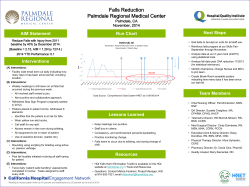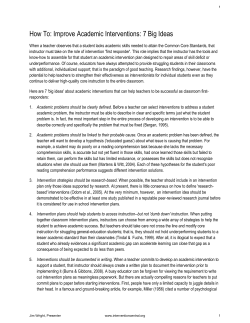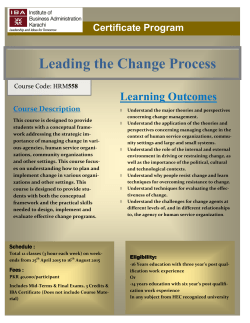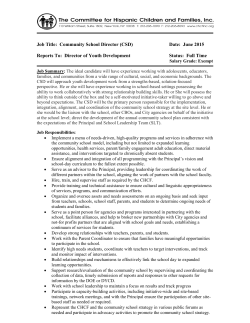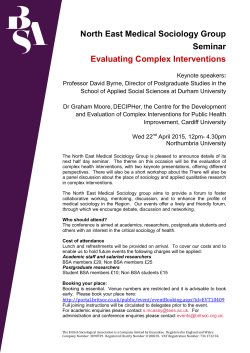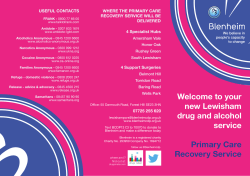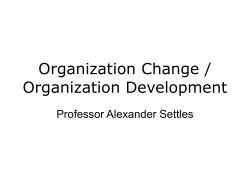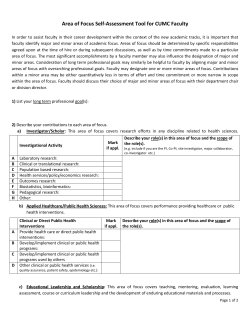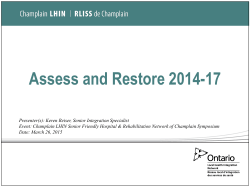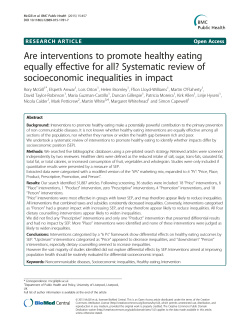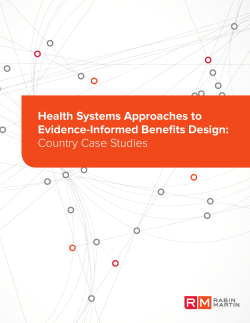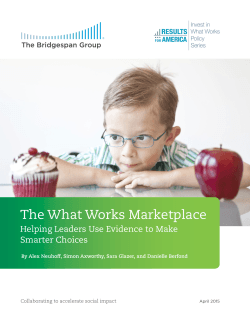
Lauren Harrell - UCLA School of Public Health
Lauren Harrell Breslow Student Writing Competition To a physician or a nurse, patients are individual human beings. To public health practitioners, patients may be small communities, states, nations, and even global ecosystems. Instead of one patient at a time, we study and treat populations. We conduct research and synthesize information to inform the best practices for a given population. Asking a public health practitioner to explain the “most critical ways public health affects lives” should elicit a similar response to asking physicians or nurses how their fields impact lives: the answer depends on the specialty and the patient. From the perspective of a biostatistician, one of the most critical ways that public health impacts lives is through the assessment, translation, and mitigation of the risk of diseases and premature death. On a local level, public health departments and community health interventions serve to decrease the rates of negative health outcomes. Community health interventions are programs instituted by organizations or local and state governments to improve the health of the local populations. Some interventions, such as wellness promotion, cooking and exercise classes, or improving access to fresh foods, are geared towards decreasing the chances of obesity-related illnesses, diabetes, heart disease, or cancer. Other examples local public health interventions include water fluoridation to reduce rates of dental decay and improving access to birth control to reduce the risk of sexually transmitted infections and unintended pregnancies. Local health departments work with hospitals and care providers to prevent, investigate, and monitor any potential disease outbreaks. If you’ve ever avoided a restaurant due to a ‘C’ health code rating, you can thank your local health inspector for evaluating the condition of the restaurant and compliance with the laws to prevent the spread of foodborne illnesses, such as hepatitis A, botulism, or E. coli. Local health officials assess the risk of every food establishment in the territory to prevent the spread of diseases and translate that risk into an easily interpreted report card, summarized in a letter grade. Research and disease monitoring from local public health can inform policy and interventions on national and even global scales. On a national level, public health and disease prevention are implemented through research, media, and policy. The case of cigarette smoking is a notable example of the effectiveness of public health in evaluating and minimizing risk through all of these outlets. When initial research showed that cigarette usage and lung cancer were linked in the 1950’s, smokers didn’t throw away their packs en mass. Researchers, statisticians, and epidemiologists designed further studies and compiled overwhelming evidence of deleterious effects of smoking. A series of litigations, media campaigns, and specific policy actions (such as warning labels on cigarettes and regulations on sales and advertisements) incorporated and expanded the research, and the rates of smoking in the United States declined from 42% of adults in 1965 to 19% of adults in 2011. National-scale, multidisciplinary interventions, ranging from infectious disease prevention to increasing access to health care, give agency to individuals for better health decisions. What can you do? The first step to help promote and participate in public health is to get informed. Start reading and learning about recent advances in health research, but also learn to think critically and synthesize the information presented. Understanding basic statistics and study designs can help with the interpretation and evaluation of research, public health interventions, and risk. When hearing about a new study from a major news outlet, try to consider the existing research on the topic and look closely at the study design and sample size. While lifetime risk of death is 100%, the risk of negative health outcomes and premature death can be reduced through effective public health.
© Copyright 2025

